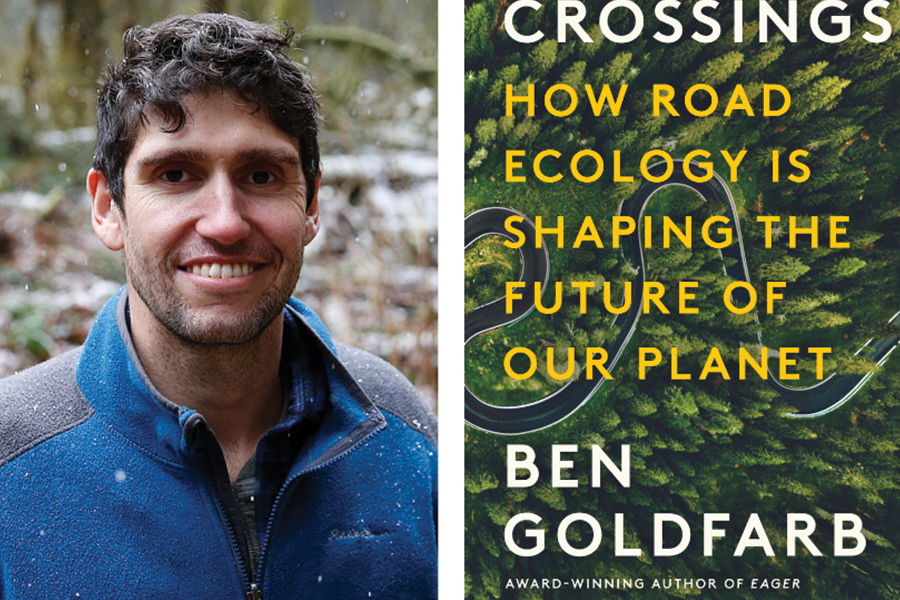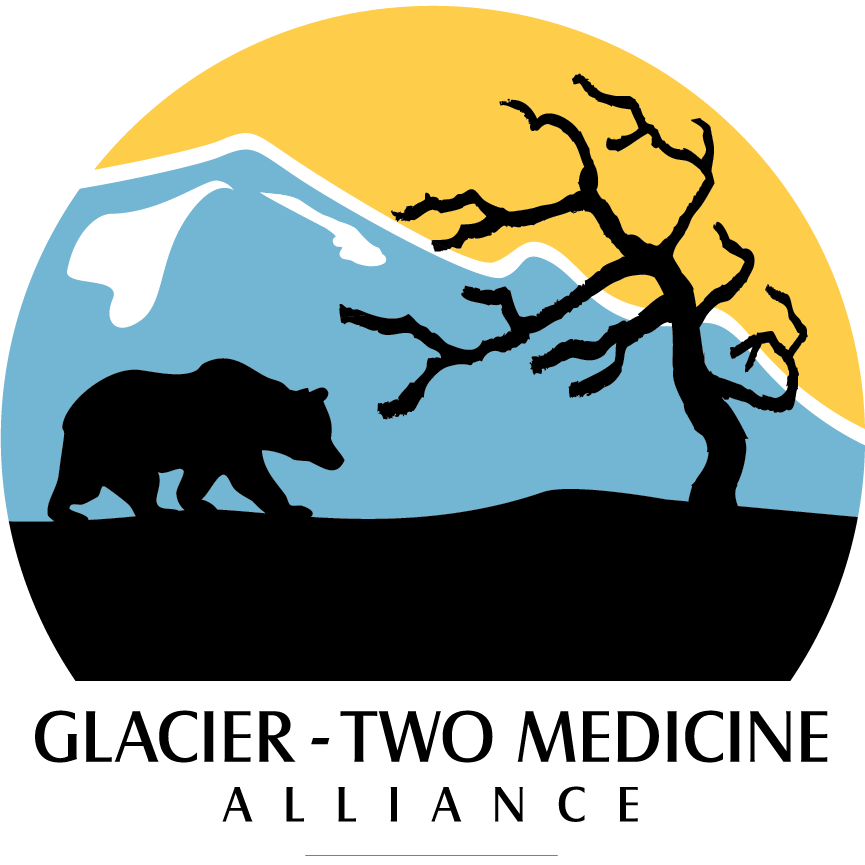
Journalist Ben Goldfarb, author of the book Crossings, will speak on Wednesday, June 26th at the Whitefish Community Center
Crossing Highway 2 south of Glacier National Park can be a perilous commute for wildlife. In addition to commonly killed species like whitetail deer or foxes, grizzly bears, black bears, lynx, even a wolverine have all been recently hit along this stretch of highway. With traffic volumes projected to steadily increase, this transportation corridor through the heart of some of the most intact habitat in the Rocky Mountains is likely to become an ever-greater source of death for wildlife as well as a barrier to their movement and migration essential to survival.
Science journalist Ben Goldfarb will discuss the immense impact roads like Highway 2 have on wildlife and their habitat, as well as ways to make them safer for both animals and people, when he visits the Whitefish Community Center on Wednesday, June 26th at 7 p.m. for the last stop on his western Montana tour for his latest book: Crossings: How Road Ecology is Shaping the Future of Our Planet.
This free event is hosted by Glacier-Two Medicine Alliance and the Center for Large Landscape Conservation. No tickets or reservations are required. After a reading and short presentation by Ben, staff from Glacier-Two Medicine Alliance will facilitate a discussion about the impact of roads and what can be done to ameliorate them.
In his book, which the NY Times named one of the best of 2023, Ben writes: “To us, roads signify connection and escape; to other life forms, they spell death and division. Name your environmental ill — dams, poaching, megafires — and consider that roads kill more creatures with less fanfare than any of them.” About one million animals perish each day along roadways in the US alone.
Written in delightful, engaging prose, the book visits different road systems around the world to illuminate the many ways roads impact wildlife and ecosystems: roads kill and maim, pollute soils, air and water, impede movement and migration, drown out vital auditory cues by their noise, spread invasive species, facilitate poaching, even tweak genes. Far from all doom and gloom, the book also explores many of the innovative solutions that are emerging to redress these ills: underpasses for mule deer in Wyoming, retrofitted culverts to aid salmon migration in Oregon, removal of old Forest Service roads in Idaho, planting vegetative cover for songbirds and milkweed for monarch butterflies along interstates in the Midwest, volunteers hauling turtles across a highway in Tennessee.
Whether by engineering or compassion, the goal everywhere is the same: to reconnect islands of habitat so that wildlife can safely get to where they need to go.
Goldfarb’s introduction to the subject of road ecology began on a tour he took back in 2013 with road ecologists from the Western Transportation Institute and Center for Large Landscape Conservation of the wildlife crossing structures being built along Highway 93 on the Flathead Reservation.
“As the sun set, we climbed atop an overpass and watched traffic flow beneath us, a powerful experience that both inspired and fascinated me. We do so much on this planet to make animals’ lives harder and more dangerous, often with our roads — yet here was this multimillion dollar piece of infrastructure, built thanks to the leadership and support of the Confederated Salish and Kootenai Tribes, that humans had created to make things easier and safer for wildlife. What could be more beautiful than that?” Goldfarb writes.
Wildlife crossings like the ones on Highway 93 are widely seen as a win – win solution: they benefit wildlife, increase motorist safety, and reduce property damage. By many accounts, wildlife crossings are a relatively cost-effective way to conserve wildlife species. They are also a particularly important tool to help wildlife respond to the effects of climate change.
Since Goldfarb’s 2013 tour, a few wildlife crossings have been constructed on other highways in Montana with a growing number in the planning phase, including on U.S. Highways 191 & 89 outside of Yellowstone, and on I-90 outside of Missoula, spurred on by significant federal funding, changes to state policy, and local advocacy. However, despite its critical ecological location, attention to Highway 2 has lagged, something Glacier-Two Medicine Alliance is working to change.
When asked what he hopes people will take away from reading CROSSINGS, Ben replied:
“I hope this book helps people realize just how much we can all do to help wildlife. We can change our own driving habits, for example by driving more slowly and carefully, and less frequently at night. We can become volunteer road ecologists ourselves, by helping to collect the roadkill data that informs future wildlife crossings. And, most importantly, we can publicly support infrastructural fixes like wildlife crossings and fencing, and encourage our elected officials and agencies to build more of them. In a sense, we all contribute to conflicts between roads and wildlife — I’ve hit animals myself. But we’re all part of the solution, too.”
Please join us for Ben’s talk and learn how you can help animals cross Highway 2 or other roadways safely.
Portions of this post first appeared on the Center For Large Landscape Conservation’s blog about Goldfarb’s book tour through western Montana and are republished here with permission.
Goldfarb is an independent conservation journalist based in Salida, Colorado and author of Eager: The Surprising, Secret Life of Beavers and Why They Matter, winner of the 2019 PEN / E.O. Wilson Literary Science Writing Award. His writing has appeared in The Atlantic, Science, The New York Times, The Washington Post, National Geographic, Orion Magazine, High Country News, Outside Magazine, Smithsonian, Audubon Magazine, Scientific American, and other publications. Goldfarb's non-fiction has been anthologized in The Best American Science & Nature Writing and Cosmic Outlaws: Coming of Age at the End of Nature. Learn more about Ben and his work.
